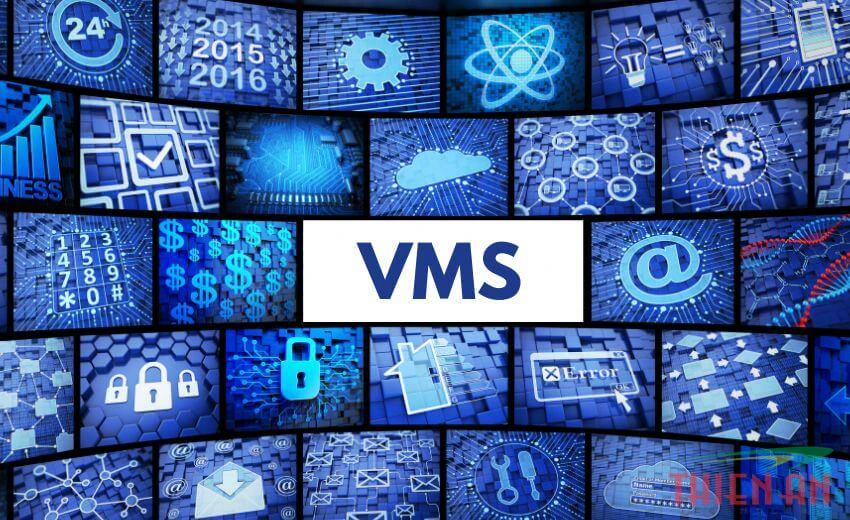Features that make VMS more advanced than ever
VMS or video management system is an important part of video surveillance. This article examines what some of the user needs are and what new and unique features VMS offers to meet user needs.
In a video surveillance system, VMS is a must-have. It stores, manages, and analyzes video data recorded by network cameras. The demand for video surveillance systems has also driven the growth of VMS. According to MarketsandMarkets, the video management system market size is expected to grow from US$10.9 billion in 2022 to US$31 billion by 2027, at a CAGR of 23.1% during this period.
ADVANCED FEATURES AND FUNCTIONALITIES
VMS today is no longer just a simple video recording software. They have become smarter and smarter to meet the increasingly complex video surveillance needs of users.
Some of the user needs are: video analytics for various tasks, namely AI video analytics and custom AI analytics; tools for rapid investigation and retrieval of recorded video evidence, namely smart search; integration of video surveillance with other security systems; and unified remote access and monitoring of distributed systems, including video surveillance, alarm processing, health monitoring and centralized reporting,” said Alan Ataev, CEO of AxxonSoft. “AI video analytics can be provided through seamless integration within VMS – this means that AI video analytics is part of the VMS functionality or is provided by integrated third-party modules/plugins.”
That said, there are certain new and unique features in today’s VMS to cater to different user needs. These are discussed as follows.
VIDEO MOTION DETECTION
Increasingly, VMSs feature video motion detection (VMD), where recording only starts when triggered by motion-based events. This has certain benefits, such as saving on bandwidth consumption and storage space. “Video motion detection is now a standard feature of most VMs and cameras. A more modern approach is AI-based detection of specific objects, such as people/vehicles, which helps filter out false alarms. Standard motion detection-based recording set to high sensitivity reduces the probability of missing something important to almost zero. You can also combine VMD-based recording with AI-based real-time alerts, and linking these alerts to video footage will help find the necessary episodes faster,” says Ataev.
AI ANALYSIS
VMS can now integrate with a variety of analytics.
“Analytics can help narrow down specific vehicles, people, and other objects using advanced metadata, and can even be trained to monitor business processes such as product flow and productivity. In this way, a modern analytics-enabled VMS can go beyond safety and security and also deliver a return on investment by minimizing commonly accepted business losses. Many modern analytics cameras offer some of these benefits and capabilities, and you can also purchase integrated or third-party packages. A modern VMS should be able to offer both approaches, allowing customers to choose the best options for their own applications and simplifying the deployment of these analytics,” said Tom Buckley, Co-Founder of Qumulex.
SMART SEARCH
Meanwhile, smart search greatly reduces video search time and makes the work of operators/investigators much easier and more efficient.
“The basic principle of smart search is to apply video analytics to generate metadata (scene descriptions) from the video feed as it is recorded. This metadata is stored in a dedicated database and is associated with the video footage. Once you set search criteria, the VMS quickly analyzes the metadata and retrieves video files that match your search query,” Ataev says. “Advanced VMS offers multi-criteria search capabilities: you can search by criteria such as crossing a road, entering and exiting an area, as well as the size, color, type, and speed of moving objects. AI-based search tools are also available; for example, they include face and license plate recognition searches and searching for objects that look similar across multiple cameras.”
“Some systems offer intelligent search for third-party video: you can import video, then the VMS analyzes it, then you can apply intelligent search tools. This can be used, for example, by police departments to speed up searches in video imported from third-party video surveillance systems installed throughout the city,” he added.
“Smart search services are a great innovation and make it easier to find what you need in a lot of video, much faster and more accurately than manually looking through hours or days of video. We feel that the innovations in analytics applications, both edge and hosted, provide the next generation of finding what you need faster and more accurately. The ability to sort and filter based on media, clothing color, and event type represents a better option than simply selecting to see all activity within a pixel range. There is some demand at this point for smart search applications, but we see a significant shift in demand for analytics approaches,” Buckley said.
CLOUD-BASED AND CENTRAL MANAGEMENT
Finally, cloud-based VMS is also gaining traction among users. “Customers today are starting to focus on leveraging cloud-based virtual machines to host video in the cloud, making it easy to access and share with interested parties. We are also seeing a trend among multi-site customers who want to manage their video and control access easily from any central location. This trend is even extending beyond the traditional commercial space and is being used by property owners who operate multi-family units, for example,” Buckley said.
We will discuss more about cloud-based VMS in an upcoming article.
Product Adopted:
Software


